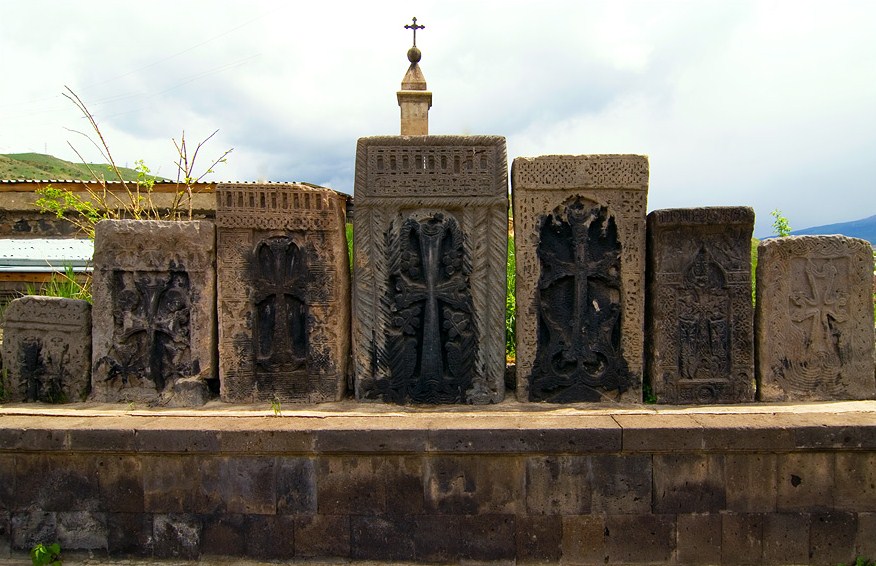Church Of The Holy Mother Of God, Vanadzor on:
[Wikipedia]
[Google]
[Amazon]
Church of the Holy Mother of God ( hy, Սուրբ Աստվածածին եկեղեցի), is a 19th-century church in
 As early as the 13th century, the area of modern-day Vanadzor was called ''Gharakilisa'' -meaning the ''black church'' in Turkic- by the Seljuks possibly. This name was derived from the black-stoned ancient Armenian church of the Holy Mother of God, probably built in the 13th century during the rule of the
As early as the 13th century, the area of modern-day Vanadzor was called ''Gharakilisa'' -meaning the ''black church'' in Turkic- by the Seljuks possibly. This name was derived from the black-stoned ancient Armenian church of the Holy Mother of God, probably built in the 13th century during the rule of the Parishes in the Region of Lori
/ref>
Vanadzor
Vanadzor ( hy, Վանաձոր) is an urban municipal community and the third-largest city in Armenia, serving as the capital of Lori Province in the northern part of the country. It is located about north of the capital Yerevan. As of the 2011 cen ...
, Armenia
Armenia (), , group=pron officially the Republic of Armenia,, is a landlocked country in the Armenian Highlands of Western Asia.The UNbr>classification of world regions places Armenia in Western Asia; the CIA World Factbook , , and ''Ox ...
. It was constructed between 1828 and 1830 and consecrated in 1831. The construction was completed through the donation of Yuzbashi (captain
Captain is a title, an appellative for the commanding officer of a military unit; the supreme leader of a navy ship, merchant ship, aeroplane, spacecraft, or other vessel; or the commander of a port, fire or police department, election precinct, e ...
) Piluman Tayiryants, during the reign of tsar Nicholas I of Russia
Nicholas I , group=pron ( – ) was List of Russian rulers, Emperor of Russia, Congress Poland, King of Congress Poland and Grand Duke of Finland. He was the third son of Paul I of Russia, Paul I and younger brother of his predecessor, Alexander I ...
and Catholicos John VIII of Armenia.
History
 As early as the 13th century, the area of modern-day Vanadzor was called ''Gharakilisa'' -meaning the ''black church'' in Turkic- by the Seljuks possibly. This name was derived from the black-stoned ancient Armenian church of the Holy Mother of God, probably built in the 13th century during the rule of the
As early as the 13th century, the area of modern-day Vanadzor was called ''Gharakilisa'' -meaning the ''black church'' in Turkic- by the Seljuks possibly. This name was derived from the black-stoned ancient Armenian church of the Holy Mother of God, probably built in the 13th century during the rule of the Zakarid
Zakarid Armenia ( hy, Զաքարյան Հայաստան ''Zakaryan Hayastan'') was an Armenian principality between 1201 and 1360, ruled by the Zakarid-Mkhargrzeli dynasty. The city of Ani was the capital of the princedom. The Zakarids were va ...
princes of Armenia.
However, the current building of the church was built between 1828 and 1830 to replace the ancient church ruined during the 1826 Gharakilisa earthquake.
The new church was built with orange and black colored tufa
Tufa is a variety of limestone formed when carbonate minerals precipitate out of water in unheated rivers or lakes. Geothermally heated hot springs sometimes produce similar (but less porous) carbonate deposits, which are known as travertine. ...
stones brought from Gyumri
Gyumri ( hy, Գյումրի, ) is an urban municipal community and the second-largest city in Armenia, serving as the administrative center of Shirak Province in the northwestern part of the country. By the end of the 19th century, when the city w ...
. It represents a single-nave domed basilica. In 1853, a school was opened in the churchyard.
The church was completely renovated in 1900 by the Tayiryants family.
Holy Mother of God of Vanadzor was among the few churches in Armenia that continued to operate as a place of worship during the Soviet
The Soviet Union,. officially the Union of Soviet Socialist Republics. (USSR),. was a List of former transcontinental countries#Since 1700, transcontinental country that spanned much of Eurasia from 1922 to 1991. A flagship communist state, ...
rule. In 1966, the belfry of the church was added at its entrance.
Khachkar
A ''khachkar'', also known as a ''khatchkar'' or Armenian cross-stone ( hy, խաչքար, , խաչ xačʿ "cross" + քար kʿar "stone") is a carved, memorial stele bearing a cross, and often with additional motifs such as rosettes, in ...
s (cross-stones) dating back to the 13th century are found in the churchyard.
The latest renovation at the church took place in 1999./ref>
References
{{Vanadzor Buildings and structures in Vanadzor Churches completed in 1831Vanadzor
Vanadzor ( hy, Վանաձոր) is an urban municipal community and the third-largest city in Armenia, serving as the capital of Lori Province in the northern part of the country. It is located about north of the capital Yerevan. As of the 2011 cen ...
Tourist attractions in Lori Province
19th-century churches in Armenia
19th-century Oriental Orthodox church buildings